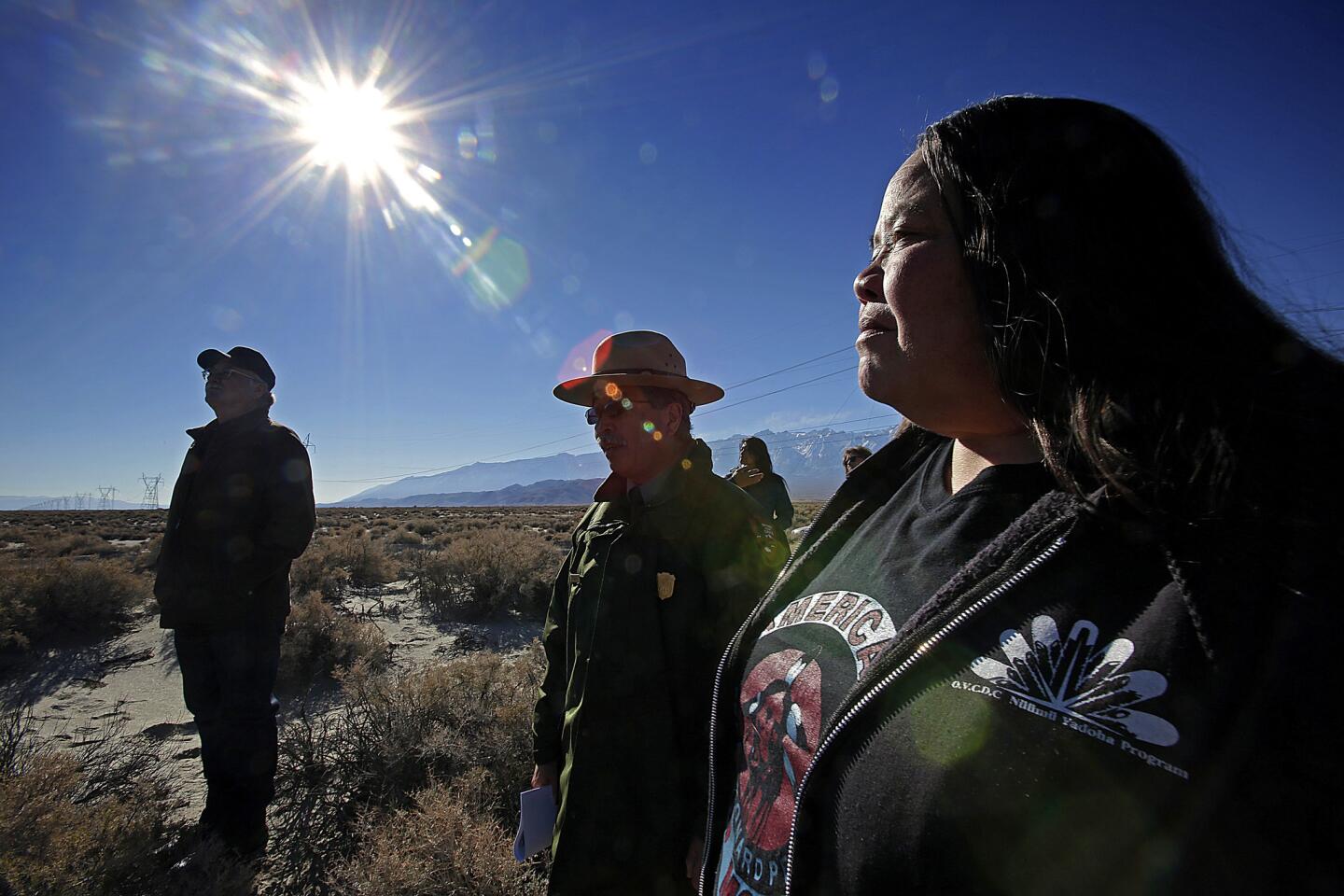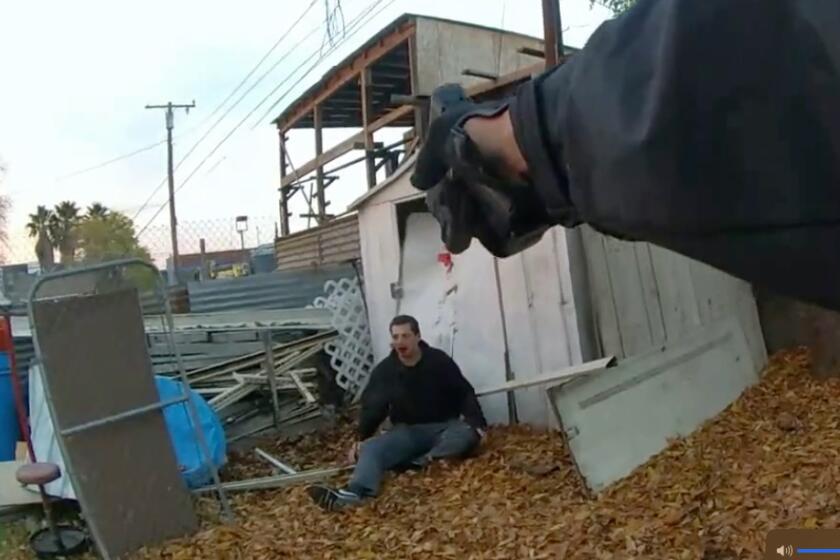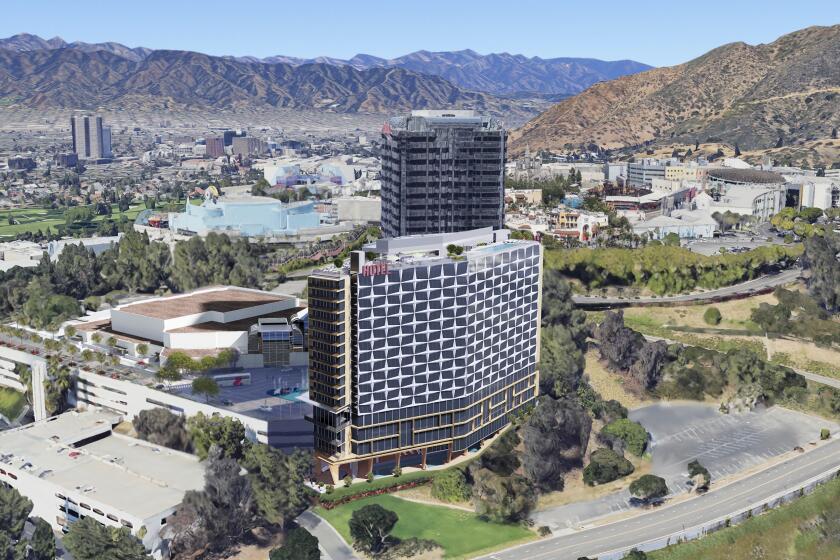Over the objections of critics, Los Angeles is moving ahead with plans to build a $680-million, 200-megawatt solar energy plant within view of this desolate eastern Sierra site that was a Japanese American internment camp during World War II.
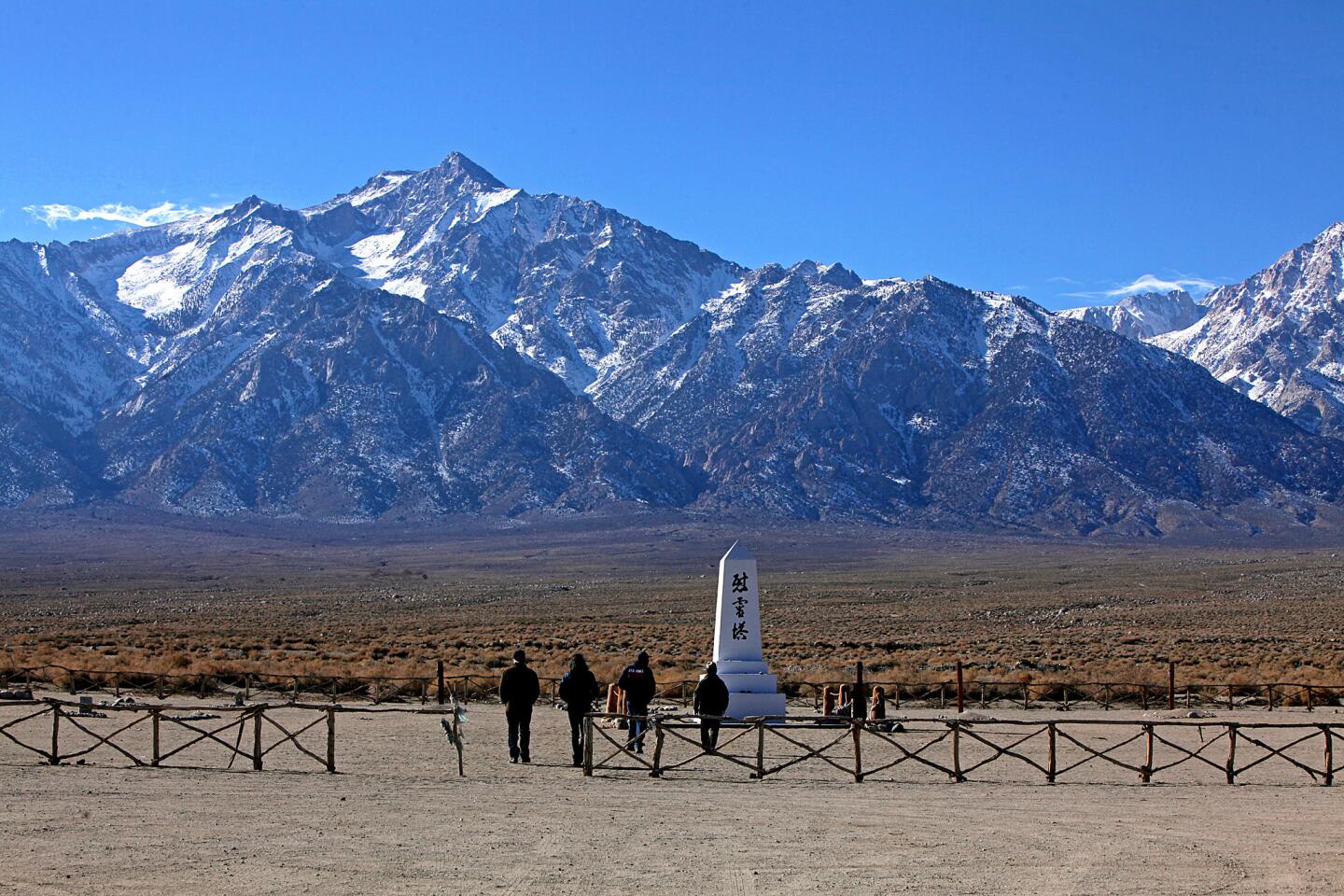
A view of Manzanar. The 2-square-mile facility would produce 440 gigawatt hours of power annually, enough to service about 75,000 homes and allow the DWP to meet its state-required renewable energy goals. (Irfan Khan / Los Angeles Times)
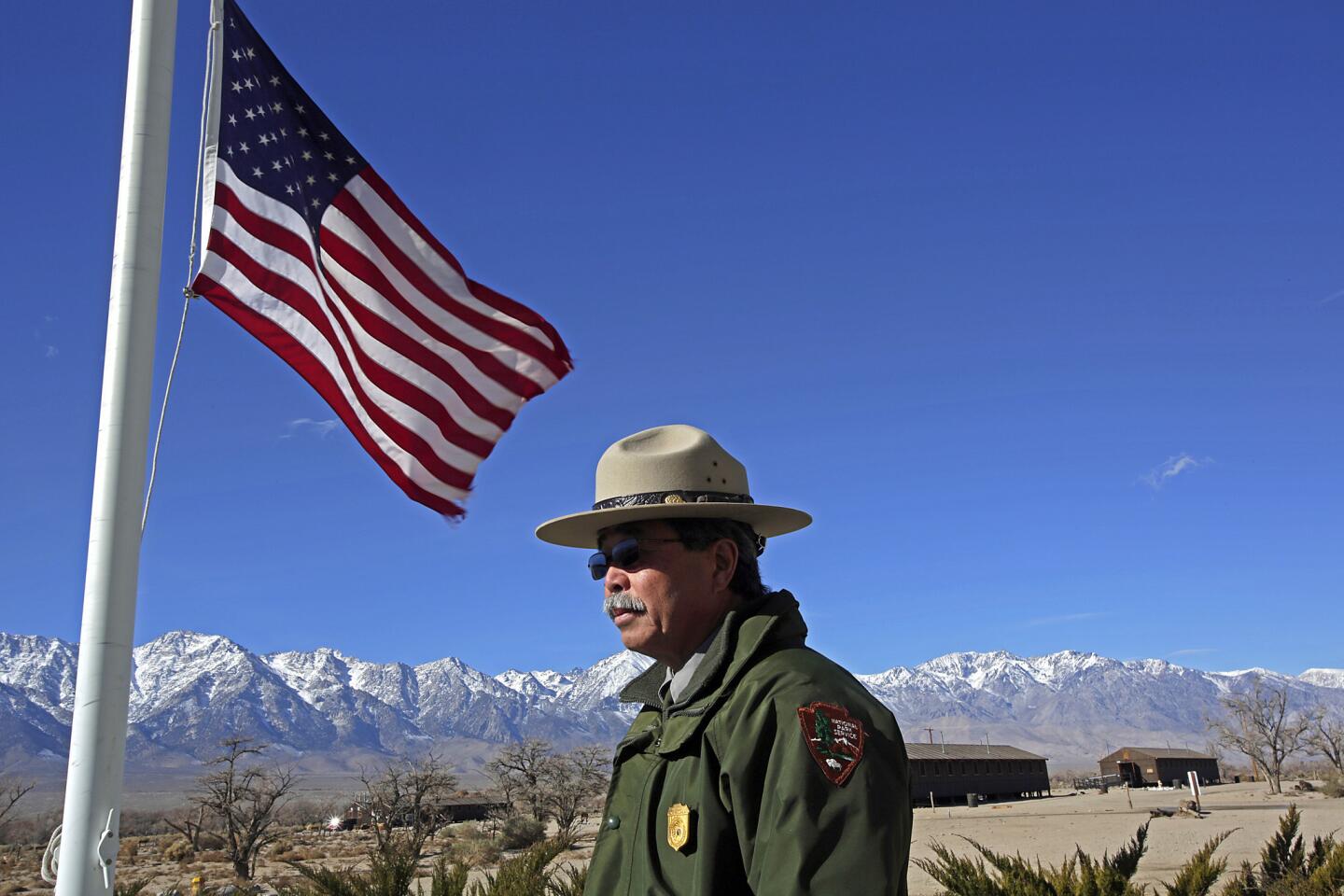
Les Inafuku, superintendent of the Manzanar National Historic Site, opposes the DWP’s plans. “For the sake of our visitors¿ experiences and the memories of our former internees, we must advocate for the area to remain undeveloped,¿ he said. (Irfan Khan / Los Angeles Times)
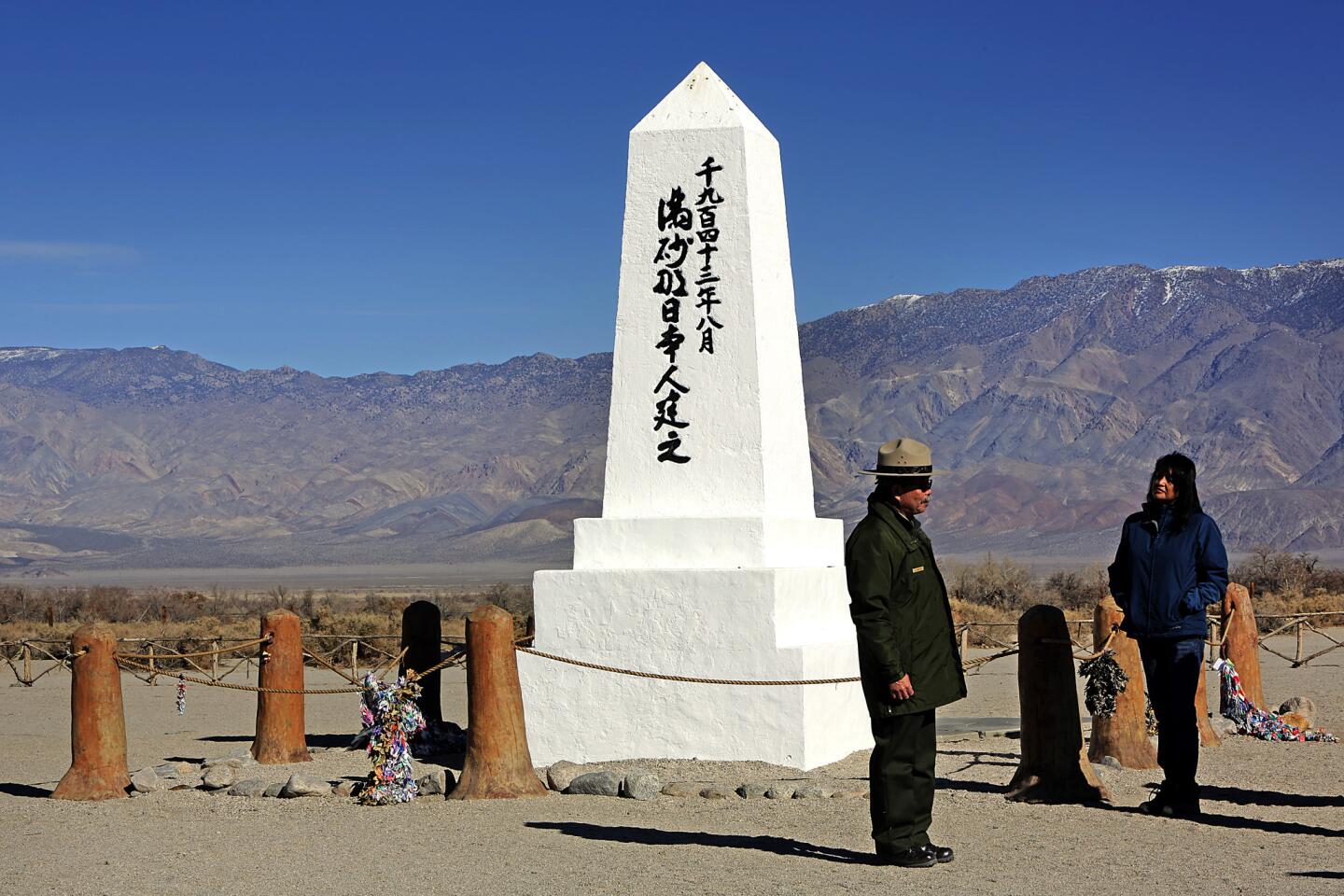
The 814-acre Manzanar site was established by Congress in 1992 to serve as a reminder of the fragility of American civil rights and to honor families whose memories are tied to the harsh landscape. (Irfan Khan / Los Angeles Times)
Advertisement
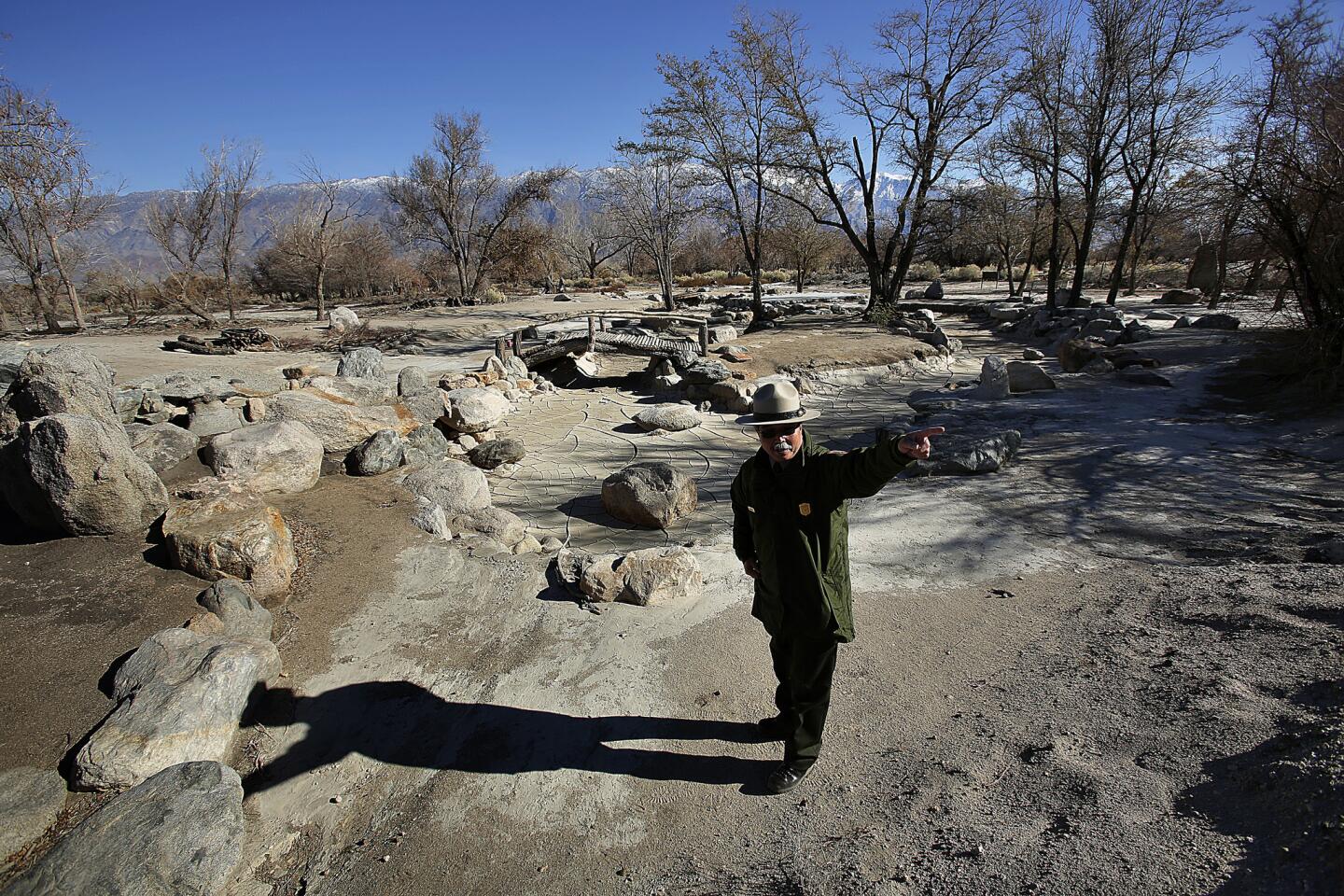
The southeastern portion of Owens Valley provides among the highest solar resource values in the nation, according to the National Renewable Energy Laboratory. (Irfan Khan / Los Angeles Times)
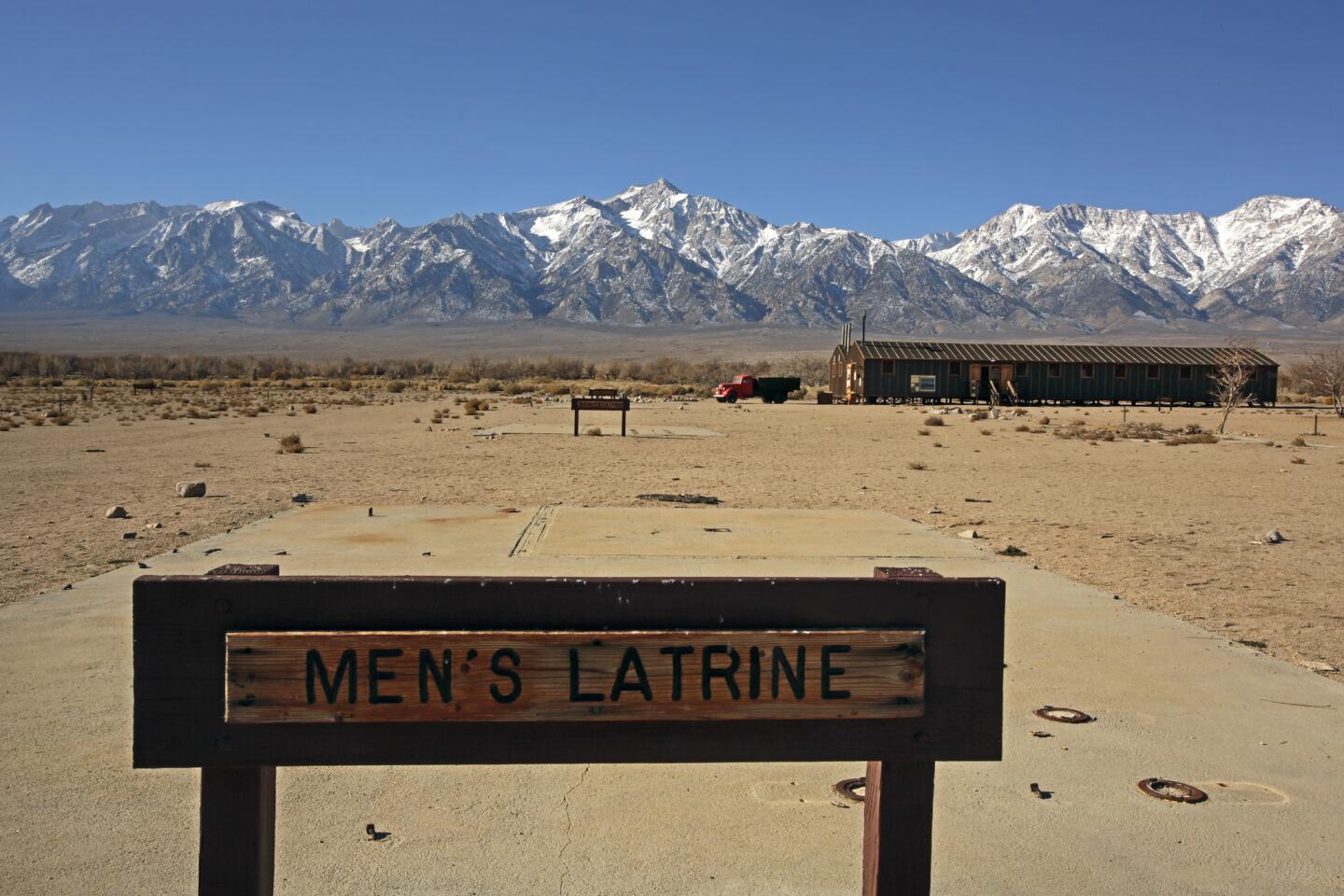
The draft environmental impact statement says the solar field, viewed from Manzanar, would appear as a thin, dark strip at the base of the Inyo Mountains. (Irfan Khan / Los Angeles Times)
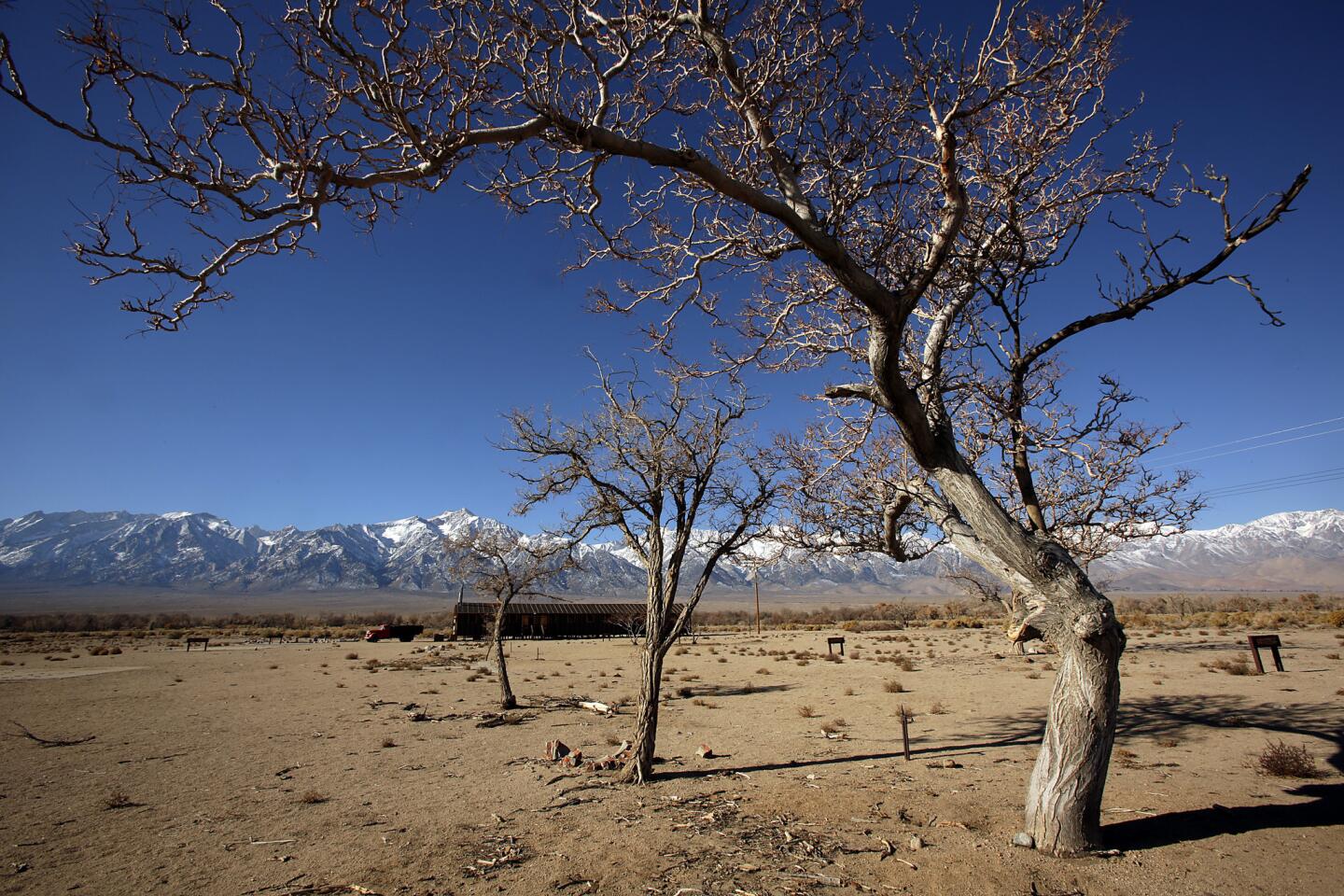
Randy Howard, the DWP¿s director of power systems planning and development, said critics¿ fears are unfounded. (Irfan Khan / Los Angeles Times)
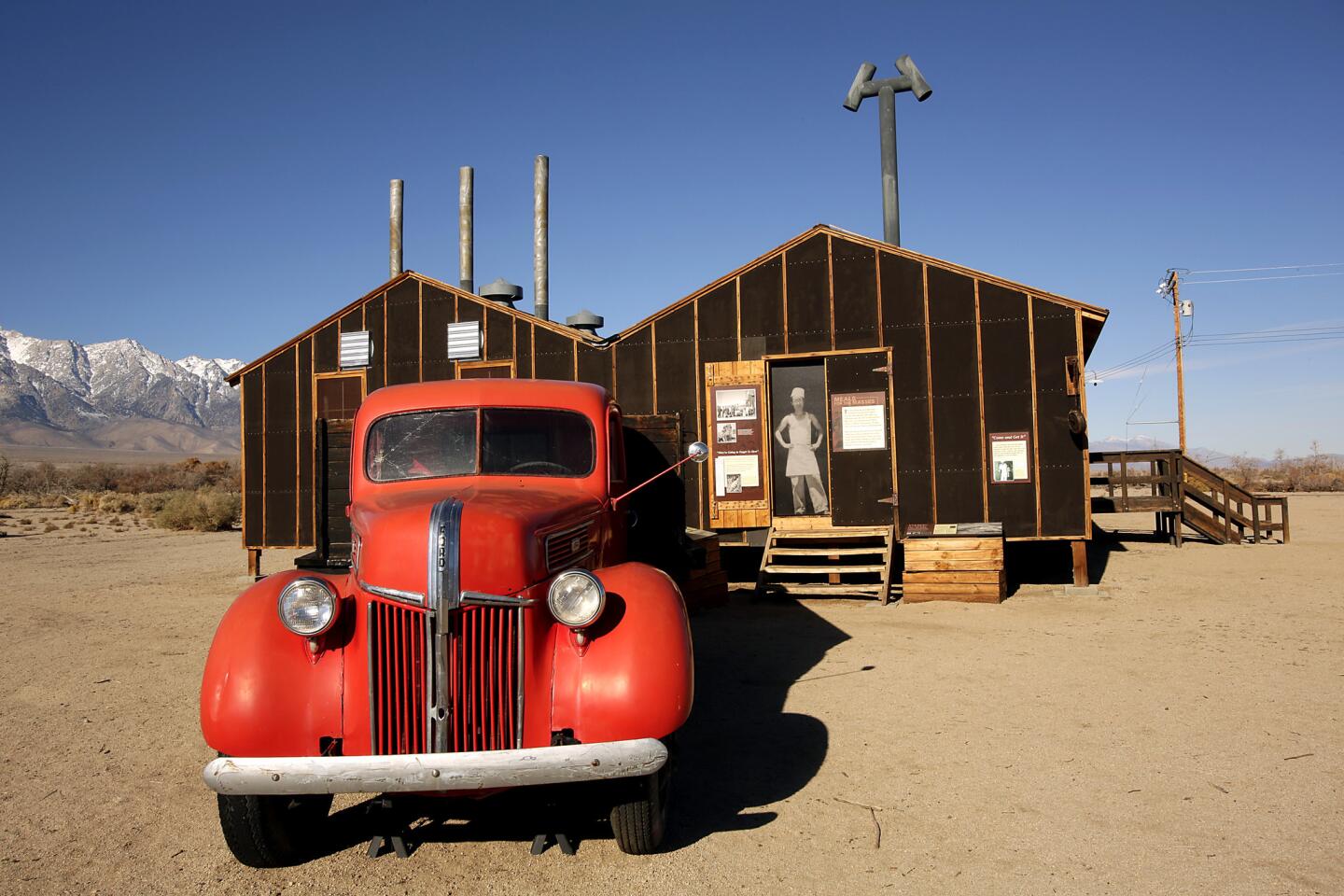
Manzanar receives 82,000 visitors each year and is the destination of annual pilgrimages to the few reminders left of life in the detention camp: scattered foundations, a cemetery, rock gardens and stark vistas (Irfan Khan / Los Angeles Times)
